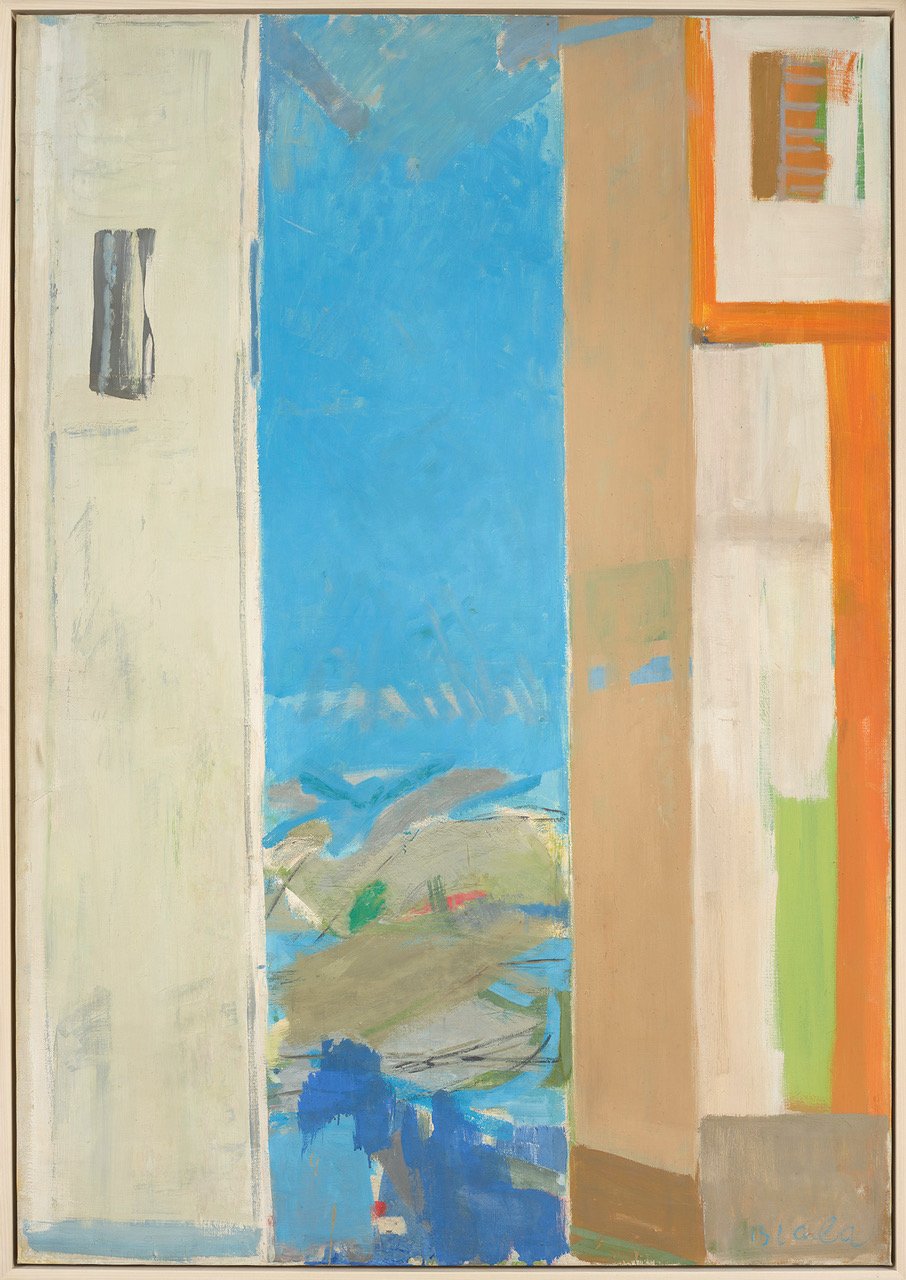Biala Paints a Picture: Summers in Spoleto
Biala (1903-2000) “Open Window: Spolète,” (1965-1968), oil on canvas, 63 3/4 x 44 3/4 in (161.9 x 113.7 cm) Photo Roz Akin
During the summers of 1965-1968, Biala attended the Festival dei Due Mondi in Spoleto. Her stay inspired several paintings and works on paper. Jason Andrew, Director of the Estate of Janice Biala, takes a took at one painting above all which celebrates Biala’s love, friendship, and appreciation of Henri Matisse.
Henri Matisse (1869-1954) “Open Window, Collioure,” 1905, oil on canvas, 21 3/4 x 18 1/8 in (55.25 x 46.04 cm) Collection National Gallery of Art, Washington, DC. Collection of Mr. and Mrs. John Hay Whitney (1998.74.7)
Biala discovered for the first time the works of Matisse when the Brooklyn Museum opened an exhibition of French painting in the spring of 1921. It was a lasting and profound experience, one after which both Biala and her older brother Jack Tworkov decided to dedicate their lives to becoming artists. Tworkov said he “never forgot the impact of Cézanne, whose ‘anxieties and difficulties’ came to mean more to him than Matisse’s liberty and sophistication.” Biala on the other hand, though drawn to Cézanne’s structured compositions, would come to assimilate Matisse’s color and sensibility.
Biala first met Matisse during the decade of the 1930s by way of introduction through her lover and companion, the English novelist Ford Madox Ford. Biala would meet Matisse again visiting him in early 1954. Upon hearing of the death of the artist, Biala wrote that she “always had Matisse in my belly.”
Widely described as an icon of early modernism, Matisse’s small but explosive work titled Open Window, Collioure (1905), is heralded as one of the most important early paintings in the style of les Fauves.
Like Matisse’s Open Window, Biala’s painting belies an optical and conceptual complexity in which conventional representation is subordinated throughout by other pictorial concerns. Both paintings offer a vantage point upon a vantage point as the view moves from the interior of a room, to the open window, to the view point of the landscape beyond. In the case of Matisse, he offers the view of Collioure and the densely packed view of boats rocking on the French Mediterranean coast. For Biala, she offers a view of Spoleto the mountainous city in Umbria, Italy, which at the time had been reinvented by the summer Festival dei Due Mondi.
Biala first traveled to Spoleto in the summer of 1965 at the invitation of her friend the “the doyenne of international culture,” Priscilla Morgan, who at the time was the associate director of the beloved festival. Morgan is credited with bringing about a renaissance to the festival extending invitations to other artists, Isamu Noguchi, Willem de Kooning, Buckminster Fuller and musicians Philip Glass, Lukas Foss, and Charles Wadsworth among others.
Biala painted Spolète over three years likely taking sketches back to her Paris studio in the 7th arrondissement made from her summer visits. Subtly incorporating a series of variations on variations, this painting is Biala’s perfect assimilation of both the School of Paris and the New York School of Abstract Expressionism.
This historic work is now available at Berry Campbell.

